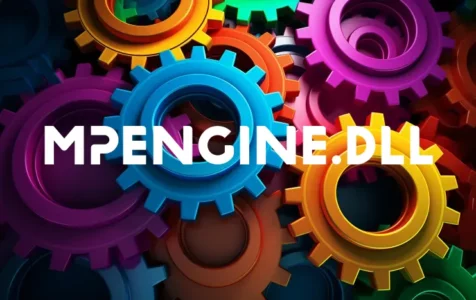mpengine.dll: An Overview
The mpengine.dll is a dynamic link library file that serves as an essential part of the Microsoft Malware Protection Engine. This engine is a core component used by various Microsoft security products like Microsoft Defender, Microsoft Security Essentials, and the Microsoft Malicious Software Removal Tool to scan for and neutralize malware threats. The dll file contains codes, resources, and data required to execute related tasks attributed to Windows’ built-in antivirus functionality.
Is mpengine.dll Safe?
The presence of mpengine.dll on your system should generally not be a cause for alarm. It is a legitimate file developed by Microsoft Corporation and plays a crucial role in the protection of your computer against malicious software. However, its critical function makes it a potential target for malware writers who may create malicious programs to mimic or tamper with it.
If you notice this dll file outside its typical location, which should be within a directory related to Windows Defender (e.g., C:\ProgramData\Microsoft\Windows Defender), it could potentially be an imposter acting as a Trojan or other form of malware. When found in its appropriate location, mpengine.dll is integral to system security and typically should not be removed or disabled.
Common Issues and Fixes with mpengine.dll
Despite its important function, users might occasionally encounter problems with mpengine.dll, including error messages stating that the file is missing, corrupt, or has encountered an error that causes a program to crash. Here’s how to tackle these situations:
Expert Tip: For smoother PC performance, consider using a PC optimization tool. It handles junk files, incorrect settings, and harmful apps. Make sure it's right for your system, and always check the EULA and Privacy Policy.
Special offer. About Outbyte, uninstall instructions, EULA, Privacy Policy.
1. Run a Full System Scan: Use your installed antivirus software to conduct a comprehensive system scan. This will help identify if the mpengine.dll is genuinely problematic or if there’s a malware imitating it.
2. Update Windows Defender: Ensure that your Windows Defender is up to date. Updates often resolve previous bugs and security vulnerabilities. You can update manually via the Windows Defender Security Center under “Virus & threat protection updates.”
3. Utilize Windows Update: Keeping your system up-to-date can prevent and fix various issues. Access Windows Update through the system settings and check for available updates.
4. Use System File Checker (SFC): To check the integrity of system files including mpengine.dll, run the System File Checker tool. Open the Command Prompt as an Administrator and type `sfc /scannow`.
5. Clean Boot: Starting your system with a minimal set of drivers and startup programs through a clean boot can help troubleshoot if background programs are interfering with the mpengine.dll file.
For detailed instructions, visit official Microsoft support websites where you can get step-by-step guidance and additional troubleshooting tips.
In Case of Suspected Infection
Users have reported instances where antivirus scans identified mpengine.dll as a threat. This could be due to false-positive results or the file being compromised by malware. To ensure that mpengine.dll is not malicious, verify the file signature and ensure it matches Microsoft’s known digital signature for the file. You can also upload the file to online services that check for virus definitions across various antivirus platforms.
Dealing with Outdated mpengine.dll Versions
In some scenarios, as discussed in online community forums, users have found multiple versions of mpengine.dll on their systems. This can be concerning, particularly when outdated versions are flagged during vulnerability assessments.
When facing such situations, manual deletion of outdated dll files may not be advisable without proper expertise, as this can potentially affect system stability. If you possess the necessary administrative privileges and technical know-how, outdated files might be removed after ensuring that the current, updated files are in place and functioning. It’s recommended to create full backups of the system before making such changes.
Furthermore, Microsoft provides information regarding the deployment of the Malware Protection Engine and how to perform manual updates should automated updates encounter issues.
In conclusion, mpengine.dll plays a key role in the security of Windows systems, and while issues can arise, correct management and updates are usually sufficient to resolve them. Always prioritize safety by double-checking the legitimacy of system files, keeping software updated, and conducting regular malware scans.
